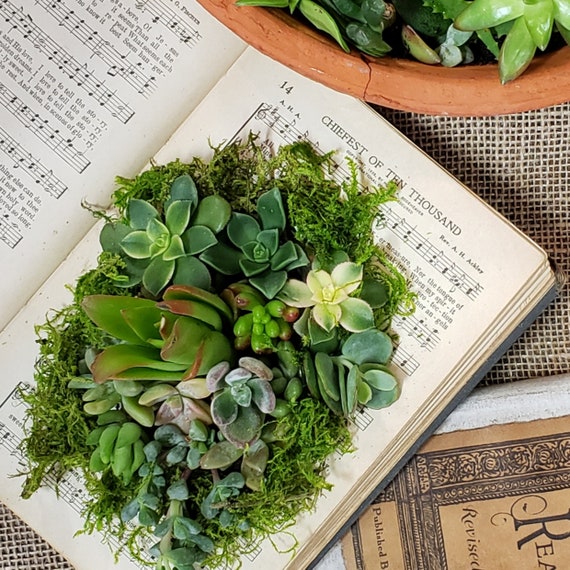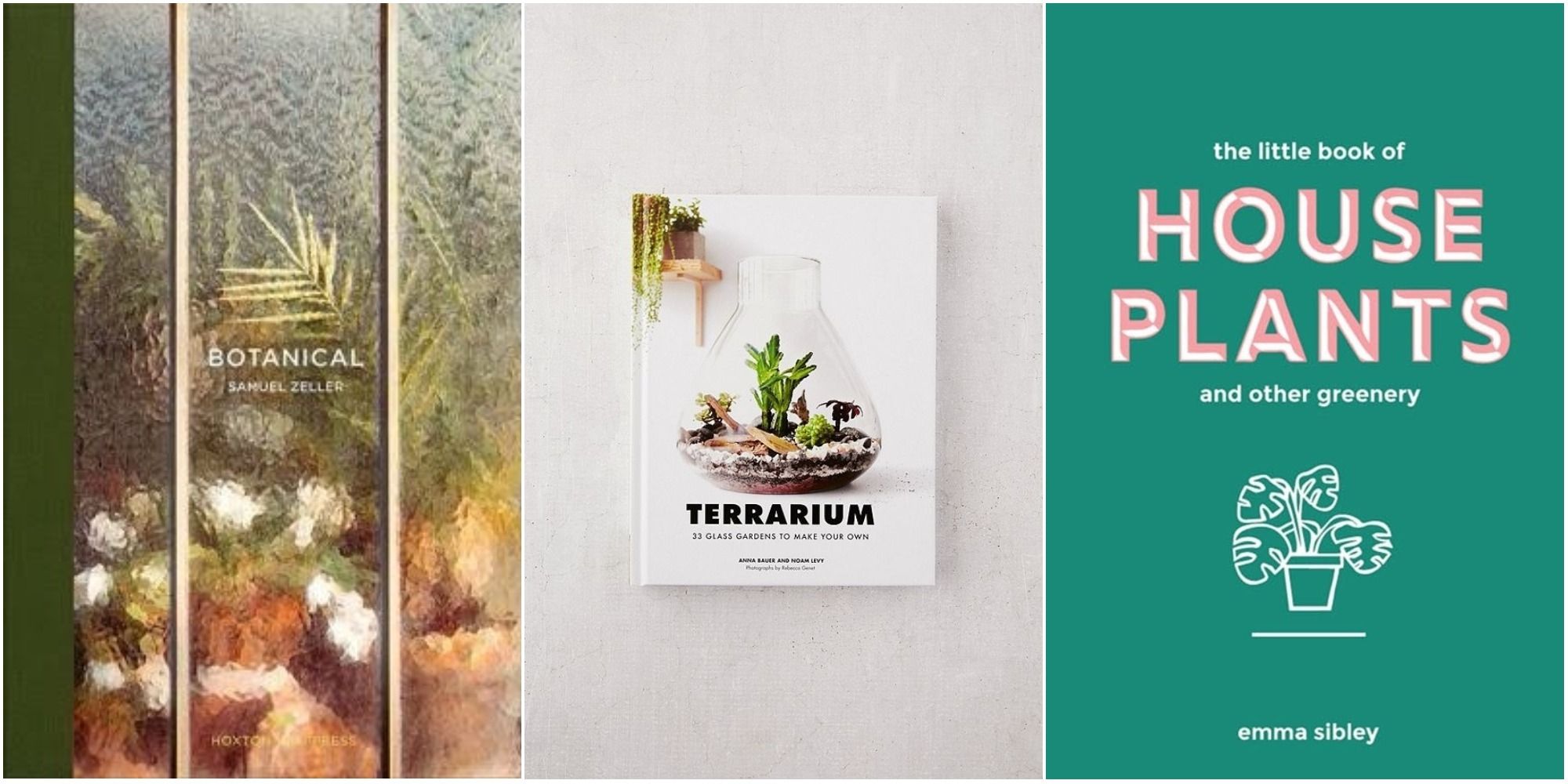The best terrarium books include “Terrarium: 33 Glass Gardens to Make Your Own” by Anna Bauer and “Miniature Gardens” by Katie Elzer-Peters. These books offer comprehensive guides to creating stunning terrarium displays.
Terrariums bring a slice of nature indoors, making them perfect for plant enthusiasts and interior decorators alike. The books “Terrarium: 33 Glass Gardens to Make Your Own” and “Miniature Gardens” provide detailed instructions, beautiful photographs, and creative ideas for building your own lush mini-ecosystems.
From choosing the right containers and plants to understanding the maintenance and care required, these books cover all aspects of terrarium creation. Whether you are a beginner or an experienced gardener, these resources will inspire and guide you through the art of terrarium building.
Introduction To Terrariums
Terrariums are miniature gardens housed within clear containers. They bring nature indoors. These tiny ecosystems are easy to maintain and visually appealing. They can fit into any living space. Let’s explore more about terrariums and their benefits.
What Is A Terrarium?
A terrarium is a glass container holding soil and plants. It replicates natural environments in a small scale. Terrariums can be open or closed. Open terrariums are ideal for dry plants. Closed terrariums create a humid environment.
Common plants for terrariums include:
- Ferns
- Mosses
- Succulents
- Air plants
These plants thrive in the controlled environment of a terrarium. They require minimal care, making them perfect for beginners.
Benefits Of Indoor Gardening
Indoor gardening offers many benefits. It improves air quality by filtering pollutants. Plants release oxygen, which freshens the air. This can boost your mood and reduce stress.
Terrariums are also educational. They teach kids about ecosystems and plant care. Children learn responsibility by tending to their plants. It’s a fun way to introduce them to gardening.
Terrariums save space. You can place them on desks, shelves, or windowsills. Their compact size makes them ideal for apartments. They add a touch of greenery to any room.
Lastly, terrariums are low-maintenance. They need occasional watering and pruning. This makes them perfect for busy lifestyles. Enjoy the beauty of nature with minimal effort.
Choosing The Right Book
Embarking on a journey to create a beautiful terrarium begins with the right knowledge. The perfect terrarium book can be your guide. But how do you choose the right one? Here, we break down the essential factors and highlight top authors in terrarium gardening.
Factors To Consider
When choosing a terrarium book, consider the following factors:
- Experience Level: Ensure the book matches your skill level.
- Type of Terrarium: Look for books specific to your terrarium type.
- Illustrations: High-quality images can aid your understanding.
- Step-by-Step Guides: Books with clear steps make learning easier.
- Reviews: Read other readers’ reviews for insights.
Assessing these factors will help you find a book that meets your needs and enhances your terrarium-building experience.
Top Authors In Terrarium Gardening
The following authors are renowned in the world of terrarium gardening:
| Author | Notable Works | Specialty |
|---|---|---|
| Teri Dunn Chace | The Complete Book of Terrarium Gardening | Beginner Guides |
| Maria Colletti | Terrariums: Gardens Under Glass | Creative Designs |
| Anna Bauer | Terrarium Craft | DIY Projects |
These authors provide valuable insights, stunning visuals, and easy-to-follow instructions. Their books can transform your terrarium gardening journey.
Beginner-friendly Books
Starting with terrariums can be fun and easy. Many books offer guidance for beginners. These books cover the basics and provide helpful tips.
Step-by-step Guides
Step-by-step guides are great for beginners. They break down each task clearly. Here are some recommended books:
| Book Title | Author |
|---|---|
| The New Terrarium | Tovah Martin |
| Terrariums – Gardens Under Glass | Maria Colletti |
The New Terrarium by Tovah Martin offers clear instructions. It includes beautiful photos. This book is perfect for beginners.
Terrariums – Gardens Under Glass by Maria Colletti is another excellent choice. It provides easy-to-follow steps. It also includes tips for plant care.
Simple Projects
Simple projects help beginners start quickly. These projects are easy and fun. Some books focus on these types of projects.
- Miniature Gardens by Katie Elzer-Peters
- DIY Terrariums by Alyson K. Brown
Miniature Gardens by Katie Elzer-Peters offers simple and creative projects. It includes many ideas for small spaces. This book is great for kids too.
DIY Terrariums by Alyson K. Brown provides easy projects. It uses common household items. This book is ideal for quick and fun terrarium making.

Credit: www.etsy.com
Advanced Terrarium Techniques
Delving into Advanced Terrarium Techniques can elevate your terrarium skills. Mastering these methods will transform your terrarium into a work of art. This section highlights two key areas: Complex Designs and Rare Plant Species.
Complex Designs
Complex terrarium designs require a keen eye and steady hand. These designs often incorporate multiple layers and unique elements.
- Layering: Use different substrates for better drainage and plant health.
- Water Features: Small waterfalls or ponds can add a dynamic touch.
- Lighting: LED lights can mimic natural sunlight.
Here’s a simple table to help you get started with complex designs:
| Element | Materials | Tips |
|---|---|---|
| Layering | Gravel, Sand, Soil | Ensure proper drainage |
| Water Features | Mini Pump, Water | Keep it clean |
| Lighting | LED Lights | Use a timer |
Rare Plant Species
Including rare plant species in your terrarium can make it unique. These plants often require special care.
- Orchids: These need specific humidity and light conditions.
- Carnivorous Plants: They thrive in nutrient-poor soil.
- Succulents: These require less water but more light.
Here are some tips for rare plant species:
- Research each plant’s needs.
- Monitor humidity and light regularly.
- Use specialized soil mixes.
By focusing on complex designs and rare plant species, you can create stunning terrariums.
Diy Terrarium Books
Discovering the art of creating terrariums can be a fun and rewarding experience. DIY Terrarium Books are perfect guides for enthusiasts looking to craft their miniature green worlds. These books offer step-by-step instructions, creative ideas, and essential materials and tools.
Creative Ideas
DIY Terrarium Books brim with creative ideas to inspire your projects. They often include:
- Unique plant combinations
- Decorative elements like stones and figurines
- Seasonal themes for different times of the year
These ideas help you design terrariums that reflect your personal style. Some books even provide tips on creating themed terrariums such as fairy gardens or desert landscapes.
Materials And Tools
Having the right materials and tools is crucial for successful terrarium making. Here’s a handy table listing the essentials:
| Material | Purpose |
|---|---|
| Glass containers | Houses the terrarium |
| Soil | Base for plant growth |
| Activated charcoal | Prevents odor and mold |
| Plants | Creates the green landscape |
| Decorative elements | Adds aesthetic appeal |
Tools you might need include:
- Small trowels
- Misting bottle
- Pruning shears
DIY Terrarium Books often provide detailed lists and tips on choosing the best supplies. This ensures your terrarium thrives and looks stunning.
Children’s Terrarium Books
Children’s terrarium books are a fantastic way to introduce young minds to the wonders of nature. These books often combine fun projects with educational elements, making them ideal for both learning and play. Below are some exciting aspects of terrarium books specifically designed for kids.
Fun Projects For Kids
Children’s terrarium books often include hands-on projects that spark creativity. These projects are easy to follow and require minimal supervision. Here are some common projects:
- Building a mini forest terrarium
- Creating a fairy garden
- Designing a dinosaur terrarium
Each project provides step-by-step instructions and colorful illustrations. This makes the process simple and engaging. Kids can also learn about different plants and animals through these fun activities.
Educational Value
Terrarium books for children offer immense educational value. They teach kids about ecosystems, plant care, and the science of life. Key educational elements include:
| Topic | Learning Points |
|---|---|
| Ecosystems | Balance of nature, food chains |
| Plant Care | Watering, sunlight needs |
| Life Science | Photosynthesis, plant growth |
Many books come with interactive elements like quizzes and fun facts. These features make learning exciting and memorable. Kids get to explore the world of plants in a playful manner.
Inspirational Terrarium Books
Terrariums are miniature gardens enclosed in glass containers. They offer a piece of nature indoors. For both beginners and enthusiasts, the right book can spark creativity. Here are some of the most inspirational terrarium books available.
Beautiful Photos
A picture is worth a thousand words. Books with stunning photos inspire readers. They showcase the beauty of terrariums. Visuals help in understanding design elements. Below are some books known for their beautiful photos:
- “Terrarium Craft” by Amy Bryant Aiello
- “Tiny World Terrariums” by Michelle Inciarrano
- “Miniature Terrariums” by Fourwords
Each book offers high-quality photos. These visuals guide readers through the process. You can see how the final product should look. Inspiration flows from each page. The photos are colorful and detailed. They make the book a joy to read.
Success Stories
Real-life success stories are motivating. They show what can be achieved. Some terrarium books include these stories. They feature individuals who created stunning terrariums.
Success stories often include:
- Personal experiences
- Steps taken
- Challenges faced
- Final results
Books like “The New Terrarium” by Tovah Martin highlight these stories. Readers learn from the experiences of others. They gain confidence to try it themselves. Success stories are proof that anyone can create a beautiful terrarium.
These books offer more than just instructions. They provide inspiration and motivation. Reading about others’ successes can be very encouraging. It shows that creating a beautiful terrarium is possible for everyone.

Credit: www.reddit.com
Maintaining Your Terrarium
Maintaining your terrarium is essential for keeping your miniature ecosystem healthy. Proper care ensures the plants and creatures inside thrive. This section will guide you through common issues and long-term care tips to keep your terrarium in top shape.
Common Issues
Terrariums can face several common issues. Identifying them early helps maintain balance.
- Overwatering: Excessive water can cause root rot and mold. Use a spray bottle.
- Underwatering: Dry soil stresses plants. Check moisture levels regularly.
- Light: Insufficient light leads to weak growth. Ensure adequate lighting.
- Temperature: Extreme temperatures harm plants. Keep your terrarium in a stable environment.
- Pests: Insects can invade terrariums. Inspect plants frequently.
Long-term Care Tips
Long-term care involves routine checks and adjustments. Consistency is key to a thriving terrarium.
- Watering Schedule: Develop a watering routine. Adjust based on plant needs.
- Pruning: Trim overgrown plants to prevent overcrowding. Use clean scissors.
- Cleaning: Remove dead leaves and debris. This prevents mold and pests.
- Soil Quality: Refresh the soil annually. This provides nutrients for plants.
- Light Adjustment: Rotate the terrarium for even light distribution. Avoid direct sunlight.
| Issue | Solution |
|---|---|
| Overwatering | Use a spray bottle. Allow soil to dry between watering. |
| Underwatering | Check moisture levels weekly. Add water as needed. |
| Light | Ensure bright, indirect light. Consider a grow light if needed. |
| Temperature | Keep the terrarium away from heat sources and drafts. |
| Pests | Inspect plants regularly. Use natural insecticides if necessary. |

Credit: www.elle.com
Conclusion
Terrarium books offer essential insights for both beginners and experts. They provide valuable tips and creative ideas. Enhance your terrarium skills by exploring these top picks. Start your journey today and create stunning indoor gardens. Enjoy the beauty and tranquility that terrariums bring to your space.
Happy reading!
